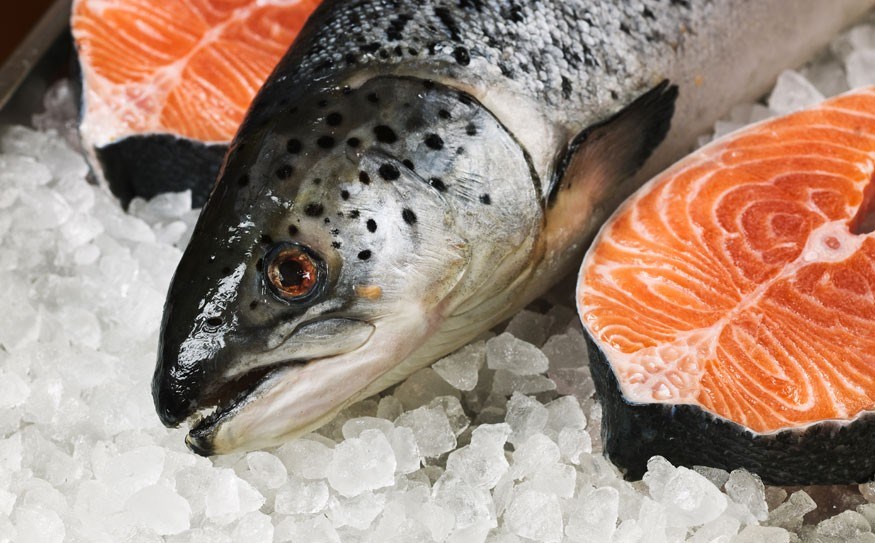Whether you prefer fish, art, or the art of fish — caught or cooked — Christine E. Jacksons' new book Fish in Art, is a celebration of fish that's pure pleasure.
A Fellow of the Linnean Society of London and recognized for her histories of natural history, Jackson has produced a beautifully illustrated book that peers into the world of art through a fish-eye lens (sorry, couldn't resist!). It tracks fish narratives through art and history from the sea and river, to the beach and riverbank, through the market to the kitchen and, finally, to your table.
You'll never look at a fish — in a painting, in clear waters, or on a slab of white, plastic-wrapped Styrofoam — the same way again.
Fish in Art is also a lot of fun, so if you have a fishy or artsy dad or grandpa, I bet you can get a copy in time for Father's Day and well before the summer run on fishing.
Jackson casts a wide, though decidedly Euro-centric, net that captures the depth and breadth of the importance of fish to we humans throughout the ages. For instance, there's a fascinating woodcut by Olaus Magnus from a 1555 Swedish book to point up the importance of herring in Swedish history. A statue of a salt worker in the town centre of Alcochete, Portugal, highlights the critical salting of fish from the Grand Banks and beyond (Roman soldiers were paid part of their wages with a salt allowance [salerium argentinium] ergo "salary").
And the genres Jackson draws from are as wide-ranging as the narrative. A nice piece of über-realism in Keith Shackleton's 1923 oil, Swordfish, reminds me of what should be the long-gone days of macho trophy fishing. Below it, a charming illustration from an 1883 issue of the children's magazine, Little Folks, shows fishy "denizens of the deep" doing a war dance before they attack some divers. Bravo!
In the "Fish in the Kitchen" chapter, I love her elaboration on Edouard Manet's Still Life with Salmon, Gurnard, Eel, Oysters and Lemon. He painted it in the summer of 1864 while at Boulogne-sur-Mer. Five years later he gave a short, effective lesson on still-life painting to pupil, Eva Gonzales: "Get it down quickly. Don't worry about the background. Just go for tonal values." He suggested trying to give the viewer the same impression as the painter had. That is, when you look at the whole, "you don't try to count the scales on the salmon ... you see them as little silver pearls against grey and pink."
Never mind the art and natural history lessons, Fish in Art stands as a wonderful testament to appreciating just how delicious — and healthy — fish is to eat. With summer approaching, when lighter fare is the order of the day, a meal of fresh, properly cooked fish can't be beat. And if you're cooking supper for dad this Father's Day, it could easily be your best bet.
First, make sure your fish really is fresh. If you can't buy it from a reliable commercial source that's good — ideally, it's just off the boat and hasn't taken days to get to the processing plant — you're better off using frozen fish.
That means fish that's been properly frozen at temperatures low enough to prevent the deterioration of the enzyme that causes the distasteful "fishy" smell and taste we've all learned to distrust. The nose knows: fresh fish or seafood is never smelly; the aroma is sweet.
If seafood is your fish of choice, given 90 per cent of the world's large oceanic fish like tuna, swordfish, marlin and cod are gone, it's critical to pay attention to conservation programs like Vancouver Aquarium's Ocean Wise.
Eighteen Whistler outlets, from Alta Bistro and Araxi to Wildflower, Whistler Cooks Catering and Whistler Conference Centre, are Ocean Wise partners, including IGA Marketplace. Give their support of our beautiful fishy friends your support.
Finally, when it comes to cooking fish nicely without overdoing it, the old "10 minutes an inch" rule rules. Even with all the variables, including type of pan, heat source and the like, if you cook your fish 10 minutes for every inch of thickness, you should come out of it with tender, juicy, tasty fish.
With any luck, you'll be as satisfied with the results as the monks sitting down to a feast of pike in Walter Dendy's 1882 oil painting, Friday.
A brilliant treatment worthy of fish
In my books, poaching fish in a classic court bouillon (French for "short boil") is about as brilliant a treatment as they can get. These recipes from The Gourmet Cookbook have stood the test of time. Try them and you'll see that fish cooked in a court bouillon is as good cold as it is hot — perfect for lighter summer suppers.
Bring to a boil one quart of water with one small onion stuck with two or three cloves; one slice of lemon; the leafy part of a stalk of celery; two sprigs of parsley; 1 1/2 teaspoons of salt (preferably rock salt or sea salt); four peppercorns; and half a bay leaf. Simmer it for 15 minutes, then store in the fridge and use as needed to poach your fish. Keep to the "10 minutes an inch" cooking rule even for poaching.
For a wine court bouillon, combine one quart each of dry white or red wine and water with one tablespoon salt; two small carrots; two medium onions thinly sliced; 12 bruised peppercorns; two cloves and a bouquet garni of six sprigs of parsley tied with one sprig of thyme, four green celery tops and two large bay leaves. Simmer 30 minutes. Store cold and use it to poach fish — in the good sense of the word "poach" — to your heart's content.
Glenda Bartosh is an award-winning journalist who loves to watch fish swim in clear lakes.




